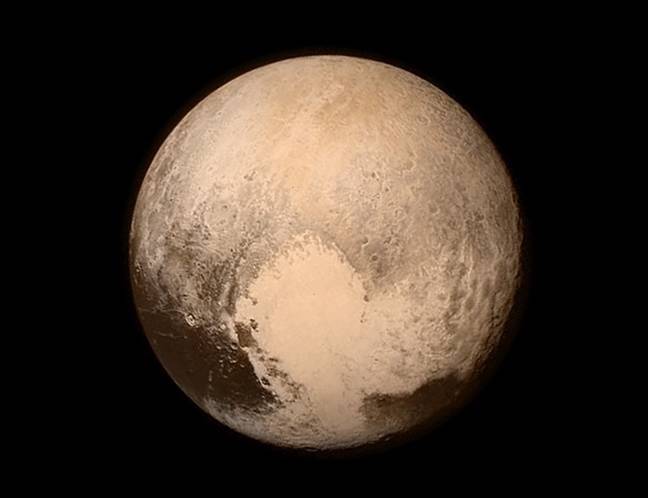This article is more than 1 year old
YOU! DEGRASSE! It's time to make Pluto a proper planet again, says NASA boffin
Cruel 'dwarf' taunts must end NOW, m'kay?
The case against Pluto
The fascinating discoveries of the New Horizons probe have reignited the debate about whether the International Astronomical Union (IAU) was right to delist Pluto from the Solar System's planetary roster in 2006, and relegate it to dwarf planet status. The vote to do so was tight and our new knowledge could change the debate.
From an astronomer's perspective it's not difficult to see why Pluto was delisted. It's tiny – smaller than our Moon and eight other satellites – and much of Pluto's mass is thick layers of ice around an even smaller rocky core.

Beautiful ... New Horizons' snap of Pluto
It's also got a vastly elliptical orbit around the Sun, unlike any other planet.
However, more importantly from the IAU's perspective, is Pluto's position. The 2006 vote came from the IAU actually defining what a planet is for the first time. This might seem obvious but, if you look at the Solar System, that's not the case – it's actually very complex.
For example, the eight current planets are very different. The first four, Mercury, Venus, Earth, and Mars, are all rocky bodies with clearly defined surfaces. The next four, Jupiter, Saturn, Neptune, and Uranus are gas giants with no such features.
The IAU came up with three defining characteristics of a planet in our Solar System. It must be in orbit around the Sun, have a spherical shape, and have "cleared the neighborhood" around its orbital plane of other bodies. It's that third test that Pluto fails on.
Pluto sits at the inner edge of the Kuiper Belt, a collection of icy bodies on the far edge of the Solar System. In 2005 the dwarf planet Eris was discovered out beyond Pluto, and has about 27 per cent more mass than Pluto.
Astronomers have been here before. In 1801, improving telescope technology enabled Catholic priest Giuseppe Piazzi to spot a body between Mars and Jupiter, which became known as the planet Ceres. Similar bodies called Juno, Pallas, and Vesta were also spotted nearby and added to the planetary roster.
But as more and more bodies like these in the general vicinity were spotted, astronomers declassified them as planets and clumped them together as the Asteroid Belt. Now the same thing is happening with Pluto, as we spot more and more objects in the Kuiper Belt.
